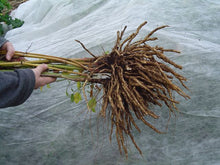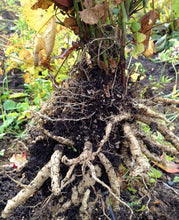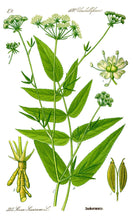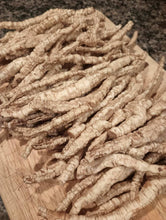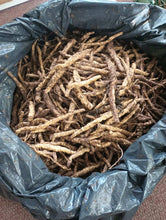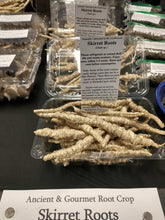Skirret
Regular price
$5.00
Sale
Sium sisarum
Origin: China
Improvement status: Landrace
Seeds per packet: ~45
BOTANICAL SAMPLE - NOT GERMINATION TESTED
Seed harvested fall, 2025.
Life cycle: Perennial
Skirret is one of those rare perennial vegetables that needs no further breeding work to be an excellent potential staple crop. We just need more people to grow it! Skirret is a root vegetable in the carrot family. Each plant produces a cluster of sweet, 5-8" long white roots. The flavor of the raw roots — which can be grated into salads, sliced for crudites, or simply munched on out of hand — is in the carrots, parsnip, root-parsley deparment. It gets sweeter with cooking, much like those other root veggies, and it can likewise be boiled, stewed, roasted, fried, or added to soups or stir fries. Wikipedia has a fun compendium of historical skirret recipes worth looking it, including this simple one: "When boiled and served with butter, the roots form a dish, declared by the seventeenth-century agriculturist John Worlidge in 1682, to be 'the sweetest, whitest, and most pleasant of roots'."
While skirret traces its roots to China, it seems to have reached peak popularity in Europe during the Middle Ages (at least as far as we can tell from this European colonial outpost). It likely reached Europe before Roman times, and Pliny the Elder mentioned that it was a favorite of the Emperor Tiberias (though the word used "siser," may actually have meant parsnip or carrot). Before sugar from sugar cane and sugar beets became popular, skirret was a major source of sweetness for Europeans. The Dutch still call it "suikerwortel" and the Germans "zuckerwurzel", both of which mean "sugar root." The roasted root makes a good chicory-like coffee substitute. It was also used medicinally, for indigestion, liver problems, and urinary issues. John Gerard, in his famous 1633 book about herbs (Herball, or General Historie of Plantes) noted that it can "provoke lust"!
Harvest after light frost for the best flavor. It's recommended to move the woody core of older plants before cooking because it can be difficult to remove later. Store like parsnips and carrots.
Our seed comes from our friend Gil Schwartz, from Gil's homestead way up in Washburn, Wisconsin on the Lake Superior.
GROWING TIPS: Start in flats (or in ground, if you're diligent) and keep in a well-weeded protected spot for at least the first year. Eventually it will mature into a dense stand, especially if it has a lot of moisture. Skirret just loves a damp corner of the garden — and this makes it easier to harvest the roots as well. If you leave chunks of root and crown in the ground when you harvest the plants will keep coming back year after year. Hardy to Zone 3!
NOTE: First photo here comes from user succulentserenity and was shared under the Creative Commons Attribution-Share Alike 3.0 Unported license. Second photo is from Restoration Seeds.







